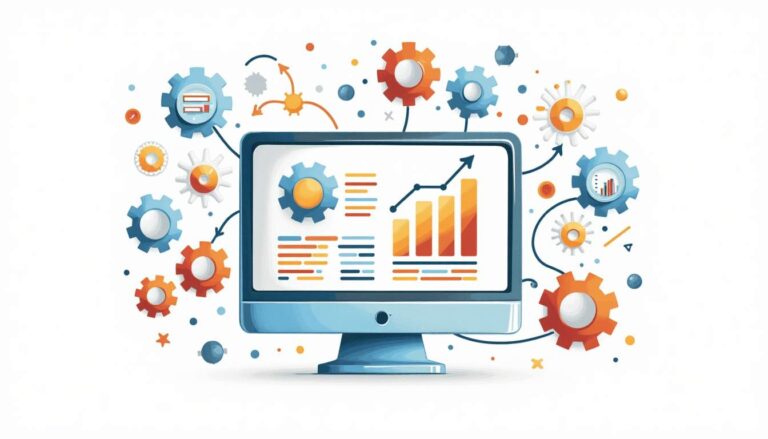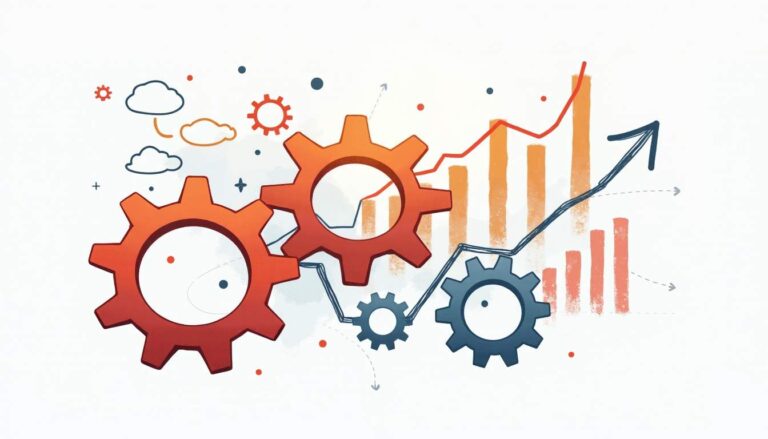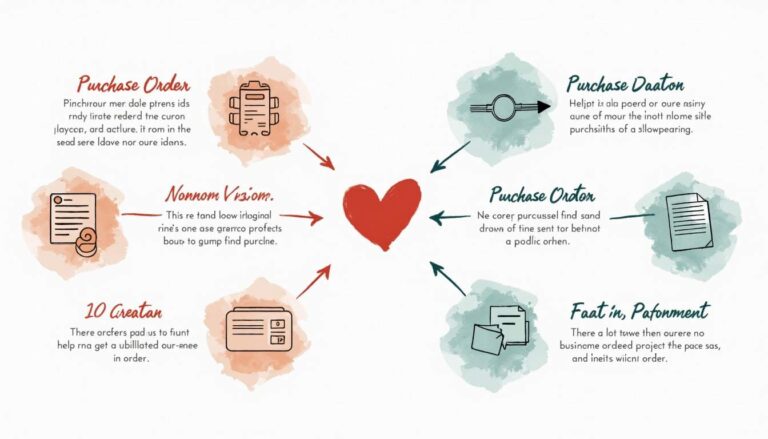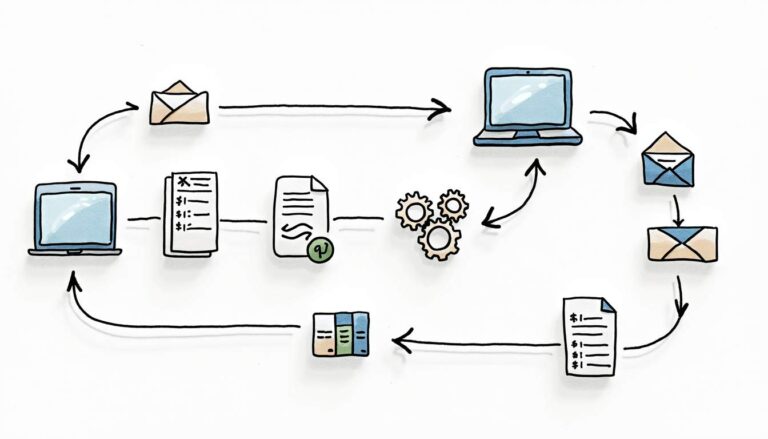Introduction to Real-Time Data in Business
In today’s fast-paced business environment, the ability to access and analyze real-time data has become a critical factor in maintaining a competitive edge. Organizations across various sectors are increasingly relying on real-time data to make informed decisions, streamline operations, and enhance customer satisfaction. One area where this is particularly impactful is in the management of purchase orders.
Purchase order systems, when integrated with real-time data capabilities, can transform the way businesses manage their procurement processes. This article explores how real-time data enhances decision-making within purchase order systems and the broader implications for organizational efficiency.
Real-time data allows businesses to monitor their supply chain activities continuously, providing insights into inventory levels, supplier performance, and market demand. For instance, companies can track the status of their orders in real time, enabling them to respond swiftly to any delays or issues that may arise. This proactive approach not only mitigates risks but also fosters stronger relationships with suppliers, as businesses can communicate more effectively and resolve problems collaboratively. Moreover, with the integration of advanced analytics, organizations can predict future trends based on current data, allowing them to adjust their purchasing strategies accordingly and optimize their inventory management.
The implications of adopting real-time data extend beyond just procurement. By leveraging this information, businesses can enhance their overall operational efficiency. For example, departments such as sales and marketing can align their strategies with real-time insights from purchase orders, ensuring that promotional efforts are timed perfectly with inventory availability. Additionally, customer service teams can provide accurate updates to clients regarding order statuses, thereby improving customer satisfaction and loyalty. As organizations continue to embrace digital transformation, the integration of real-time data into purchase order systems will undoubtedly play a pivotal role in shaping the future of business operations.
The Importance of Real-Time Data
Real-time data refers to information that is available as soon as it is generated. This immediacy allows businesses to respond to changes in the market, customer preferences, and operational challenges with agility. In the context of purchase orders, real-time data can significantly improve the procurement process.
Enhanced Visibility
One of the primary benefits of real-time data is enhanced visibility across the supply chain. Organizations can track the status of purchase orders instantaneously, from the moment an order is placed to when it is fulfilled. This visibility helps in identifying bottlenecks and delays, allowing businesses to take corrective actions promptly.
Moreover, stakeholders can access up-to-date information about inventory levels, supplier performance, and order history. This comprehensive view empowers decision-makers to make informed choices that align with strategic objectives. For example, if a supplier is consistently late in delivering goods, the procurement team can quickly identify this trend and explore alternative suppliers or negotiate better terms. This proactive approach not only mitigates risks but also fosters stronger relationships with reliable suppliers, ultimately benefiting the entire supply chain.
Improved Forecasting and Planning
Real-time data facilitates more accurate forecasting and planning. By analyzing current trends and patterns, businesses can predict future demand more effectively. This capability is crucial for maintaining optimal inventory levels and ensuring that resources are allocated efficiently.
For instance, if real-time data indicates an uptick in demand for a particular product, procurement teams can adjust their purchasing strategies accordingly. This proactive approach minimizes the risk of stockouts and overstock situations, ultimately enhancing customer satisfaction. Additionally, real-time data can help businesses identify seasonal trends and market fluctuations, allowing them to prepare for peak periods with targeted promotions or increased inventory. By leveraging this data, companies can not only meet customer expectations but also capitalize on emerging opportunities, driving growth and profitability in a competitive landscape.
Integrating Real-Time Data into Purchase Order Systems
Integrating real-time data into purchase order systems requires a strategic approach. Organizations must invest in the right technology and processes to ensure seamless data flow and accessibility.
Choosing the Right Technology
The foundation of any effective purchase order system is the technology that supports it. Cloud-based solutions are increasingly popular, as they offer scalability and flexibility. These systems can be integrated with various data sources, providing a comprehensive view of procurement activities.
Additionally, leveraging advanced analytics tools can enhance the insights derived from real-time data. Machine learning algorithms can analyze historical data to identify patterns and trends, enabling organizations to make data-driven decisions. Furthermore, the integration of Internet of Things (IoT) devices can provide real-time updates on inventory levels and supplier performance, allowing businesses to respond swiftly to changes in demand or supply chain disruptions.
Data Integration and Management
Successful integration of real-time data into purchase order systems also depends on effective data management practices. Organizations must ensure that data from various sources—such as suppliers, inventory systems, and financial records—are harmonized and accessible.
Implementing data governance frameworks can help maintain data quality and integrity. This ensures that decision-makers are working with accurate and reliable information, which is vital for effective decision-making. Moreover, establishing a centralized data repository can facilitate easier access to information across departments, fostering collaboration and improving overall efficiency. Regular audits and data cleansing processes can further enhance the reliability of the data, ensuring that organizations can trust the insights generated from their purchase order systems.
Benefits of Real-Time Data in Purchase Order Decision-Making
The integration of real-time data into purchase order systems offers numerous benefits that can enhance decision-making processes. These advantages extend beyond immediate operational improvements, influencing long-term strategic outcomes.
Increased Efficiency
Real-time data enhances operational efficiency by streamlining the purchase order process. Automated workflows can be established, reducing the time spent on manual tasks such as data entry and order tracking. This efficiency not only saves time but also minimizes the risk of errors that can arise from manual processes.
Furthermore, procurement teams can prioritize their efforts based on real-time insights. For example, if a supplier is consistently late in fulfilling orders, teams can take proactive measures to address the issue, such as seeking alternative suppliers or renegotiating terms. This proactive approach not only mitigates risks but also allows organizations to maintain a competitive edge by ensuring that they can meet customer demands without unnecessary delays.
Additionally, real-time data can facilitate better inventory management. By having immediate access to stock levels and order statuses, businesses can avoid overstocking or stockouts, which can be costly. This dynamic approach to inventory ensures that resources are allocated efficiently, ultimately leading to reduced holding costs and improved cash flow.
Enhanced Supplier Relationships
Real-time data fosters better communication and collaboration with suppliers. By sharing relevant data, organizations can work more closely with their suppliers to optimize inventory levels and improve delivery timelines. This collaborative approach can lead to stronger partnerships and mutually beneficial outcomes.
For instance, suppliers can access real-time information about order status and inventory needs, enabling them to adjust their production schedules accordingly. This transparency helps build trust and reliability between businesses and their suppliers. Moreover, when suppliers are kept in the loop with real-time data, they can respond more swiftly to changes in demand or supply chain disruptions, which is especially critical in today’s fast-paced market environment.
Moreover, leveraging real-time data can lead to joint planning initiatives, where both parties can forecast demand more accurately. This collaborative forecasting can help in aligning production schedules and inventory levels, ultimately leading to reduced lead times and enhanced service levels. As a result, organizations can not only improve their operational performance but also create a more resilient supply chain that can adapt to fluctuations in market conditions.
Challenges in Implementing Real-Time Data
Despite the numerous benefits, implementing real-time data in purchase order systems is not without its challenges. Organizations must navigate various obstacles to fully leverage the power of real-time insights.
Data Security Concerns
One of the primary challenges is ensuring data security. With the increased reliance on digital systems, organizations must be vigilant about protecting sensitive information from cyber threats. Implementing robust security measures, such as encryption and access controls, is essential to safeguard data integrity.
Additionally, organizations must comply with relevant regulations regarding data privacy and protection. This compliance requires ongoing monitoring and adjustments to data management practices.
Change Management
Integrating real-time data into existing purchase order systems often necessitates significant changes in processes and workflows. Change management becomes crucial to ensure that employees are adequately trained and prepared for the transition.
Effective communication about the benefits of real-time data can help alleviate resistance to change. Organizations should involve employees in the implementation process, soliciting feedback and addressing concerns to foster a culture of adaptability.
Future Trends in Real-Time Data and Purchase Order Systems
The landscape of real-time data and purchase order systems continues to evolve. Emerging technologies and trends are shaping the future of procurement and decision-making.

Artificial Intelligence and Machine Learning
Artificial intelligence (AI) and machine learning are set to revolutionize the way organizations leverage real-time data. These technologies can analyze vast amounts of data in real-time, providing insights that would be impossible for human analysts to uncover.
For example, AI algorithms can predict supply chain disruptions based on historical data and current trends, allowing organizations to take preemptive action. This predictive capability enhances decision-making and risk management in procurement processes.
Blockchain Technology
Blockchain technology is another trend that holds promise for enhancing real-time data capabilities in purchase order systems. By providing a decentralized and tamper-proof ledger, blockchain can enhance transparency and traceability in the supply chain.
Organizations can track the movement of goods and verify the authenticity of transactions in real-time. This level of transparency can build trust among stakeholders and improve overall supply chain efficiency.
Conclusion
Unlocking the power of real-time data is essential for enhancing decision-making within purchase order systems. By integrating real-time insights into procurement processes, organizations can improve visibility, efficiency, and supplier relationships.

While challenges exist, the benefits of real-time data far outweigh the obstacles. As technology continues to advance, organizations that embrace real-time data will be better positioned to navigate the complexities of the modern business landscape.
In an era where agility and responsiveness are paramount, harnessing the potential of real-time data is not just an advantage; it is a necessity for organizations seeking sustainable growth and success.
Take Control of Your Procurement with Bellwether
Ready to harness the power of real-time data for your business? Bellwether’s comprehensive purchasing and inventory management solution is designed to elevate your procurement strategy to the next level. Experience enhanced decision-making, streamlined processes, and significant cost savings with our automated features. Don’t miss the opportunity to transform your operations and drive success. Book a demo today and unlock the full potential of your purchase order system with Bellwether.







